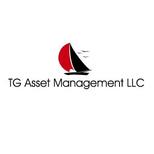 Author: Bob Gay, GEARS
Author: Bob Gay, GEARS
Covestor models: Earnings Surprise, Speedboat, Luxury Liner
Happy New Year and welcome to the first exciting weeks of the new quarter. Our data for the prior quarter period is now complete and shows a very strong acceleration in corporate wealth, with strong sales growth, huge cash and securities positions and rising cash from operations.
Last quarter was the seventh quarter of a V-shaped recovery from the huge inventory correction that followed the financial crisis. Sales growth is now the highest since the late nineteen-nineties. Clearly these rates of growth cannot be maintained.
The question is how steeply will the sales growth rate fall, and with what frequency in the company population. In recent quarters, companies have begun to expand capital expenditures relative to sales. In the third quarter (annual period) free cash flow fell.
This indicates that we have entered the late cycle. Growth driven by corporate capital expenditures is stronger and more sustainable than growth driven by consumer durables purchases. We can forecast a few years of high sales growth (above 10% as it was from 1995 to 2000) and accelerating cash flow.
Long bonds have performed so well that stocks are barely 20% above their 2009 crisis low relative to bonds, and equity valuation is depressed. As the capital expenditure cycle unfolds over the next few quarters, we expect commodity prices and inflation to rise.
As companies run out of operating cash flow (already started), then play down cash and investments (a process that could take two years itself), capital financing demand will increase and interest rates will rise. That will be our cycle peak indicator.
With stocks cheap and depressed, this is one of the great equity buying opportunities. It is also a great opportunity for the active portfolio manager. This tide will not lift all boats and the low and stable sales growth companies that will be left behind are trading at premium prices. Active managers must focus on growth and acceleration rather than stability and yield. Even in the difficult year just passed, the GEARS models that seek out accelerating companies produced remarkable returns. Two GEARS models are in the top 10 on the Covestor platform for the past year.
There are plenty of value traps at this stage, and we believe investors should not own low and stable growth companies. The most dangerous value trap of all is fixed income securities. Long treasury Bonds in particular are lauded for their security. Although there is no risk to the coupon, higher inflation is a significant risk to long term purchasing power and higher interest rates are a short tern risk to capital. Over the past year, long bond yields have declined to historical lows and the capital value of long bond portfolios have increased significantly. Clearly, increased corporate demand for financing of capital expenditures cannot coexist with historically low interest rates. One or the other must give.
Over the next few weeks we will collect another round of corporate financial statements that will provide yet another clue as to the trend in corporate wealth. For now, corporations are very wealthy and growth in shareholder wealth is at a rate not seen in over a decade.
Investors should have their maximum allocation to stocks at this stage. We anticipate political risks, systematic risks and sovereign risks will dissipate. Purchasing long bonds to yield less than 3% will impair investment returns for decades.


